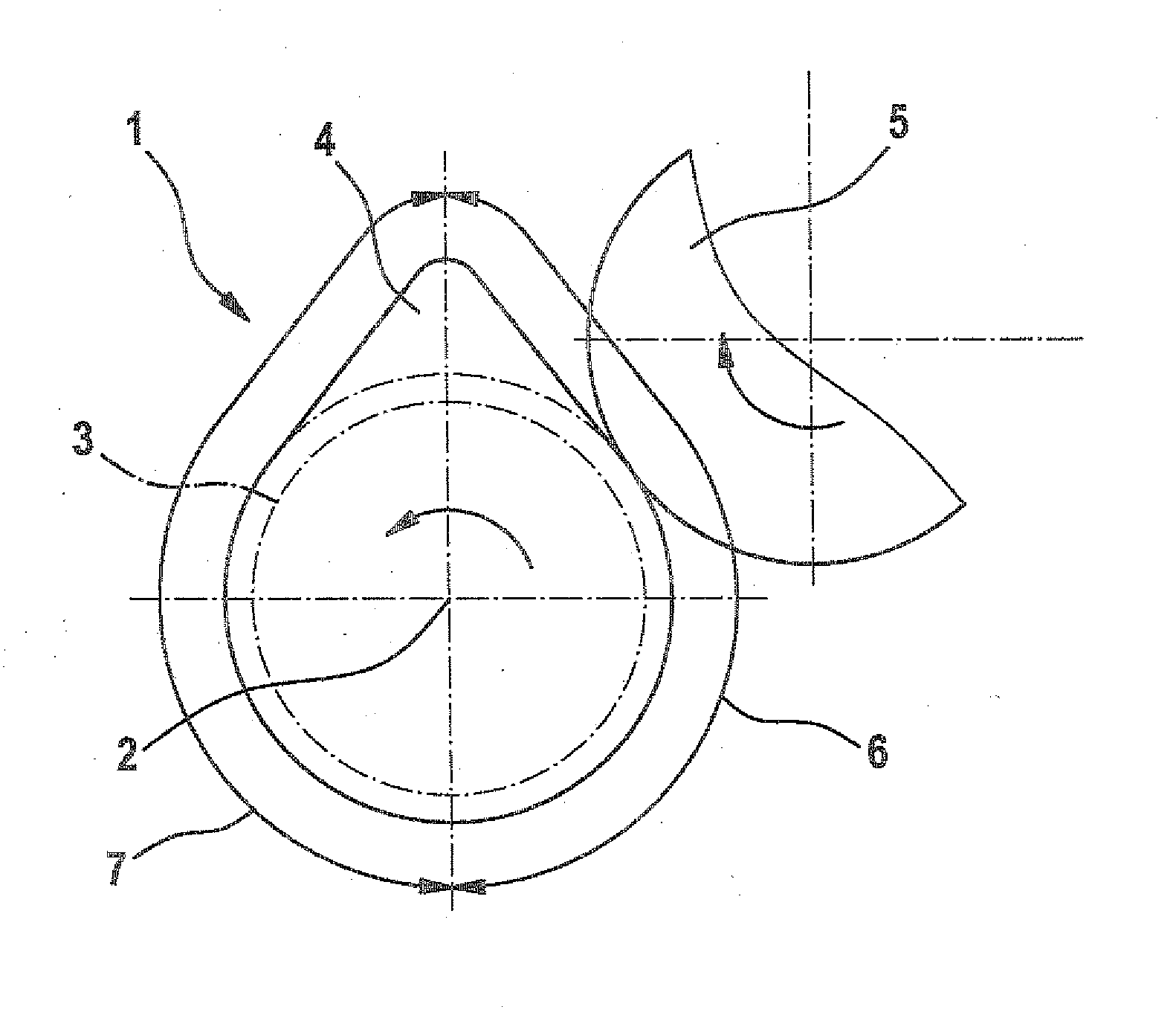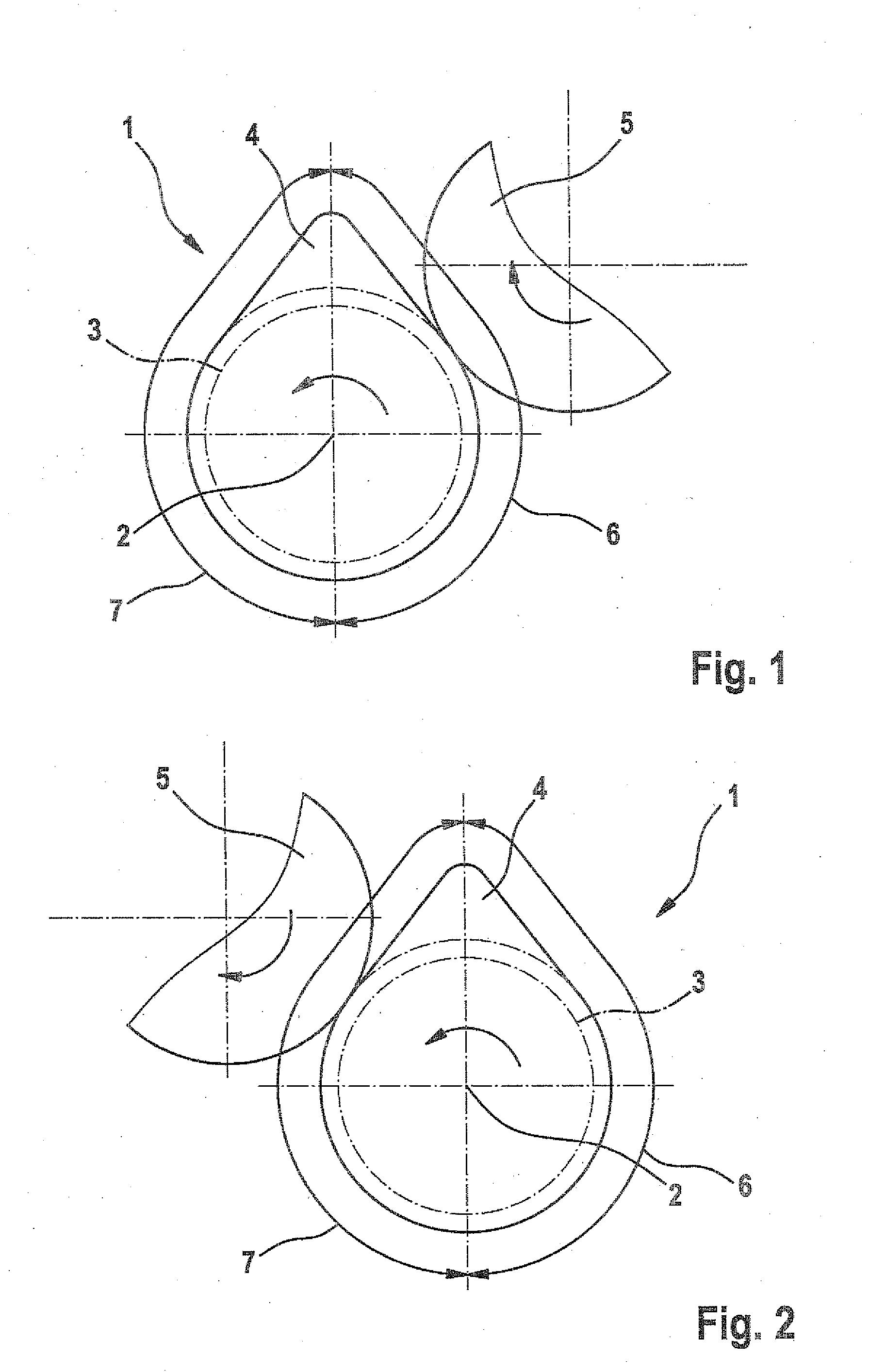Operation of camshafts, particularly for an injection pump for diesel, having a running pulley driven in a lifting manner
a camshaft and pulley technology, which is applied in the direction of valve drives, machines/engines, gearing, etc., can solve the problems of high friction coefficient, achieve the effect of reducing material ratio mr, reducing roughness depth, and increasing roughness depth
- Summary
- Abstract
- Description
- Claims
- Application Information
AI Technical Summary
Benefits of technology
Problems solved by technology
Method used
Image
Examples
Embodiment Construction
[0017]FIG. 1 is a view of a cam and a pressure roller, with a cross-sectional view of the camshaft, with the pressure roller in contact with the return stroke section;
[0018]FIG. 2 is a view of a cam and a pressure roller, with a cross-sectional view of the camshaft, with the pressure roller in contact with the working stroke section;
[0019]FIG. 3 is a side view of a camshaft with a cam incorporated into it, with the cam brought into contact with a pressure roller;
[0020]FIG. 4 is a schematic cross-sectional depiction of an alternative embodiment of a cam, which is brought into contact with a pressure roller; and
[0021]FIG. 5 is a schematic cross-sectional view of a camshaft with a double cam, which is embodied in the form of an ellipse.
[0022]In FIGS. 1 and 2, the camshaft drive is labeled with the reference numeral 1. It includes a camshaft 3 that rotates around a camshaft longitudinal axis 2. A cam labeled with the reference numeral 4 is integrated into the camshaft 3; the cam 4 likew...
PUM
 Login to View More
Login to View More Abstract
Description
Claims
Application Information
 Login to View More
Login to View More - R&D
- Intellectual Property
- Life Sciences
- Materials
- Tech Scout
- Unparalleled Data Quality
- Higher Quality Content
- 60% Fewer Hallucinations
Browse by: Latest US Patents, China's latest patents, Technical Efficacy Thesaurus, Application Domain, Technology Topic, Popular Technical Reports.
© 2025 PatSnap. All rights reserved.Legal|Privacy policy|Modern Slavery Act Transparency Statement|Sitemap|About US| Contact US: help@patsnap.com



